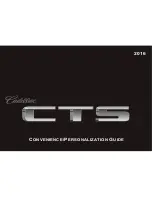
Include an ice scraper, a small brush or broom, a
supply of windshield washer fluid, a rag, some winter
outer clothing, a small shovel, a flashlight, a red
cloth and a couple of reflective warning triangles. And, if
you will be driving under severe conditions, include a
small bag of sand, a piece of old carpet or a couple of
burlap bags to help provide traction. Be sure you
properly secure these items in your vehicle.
Driving on Snow or Ice
Most of the time, those places where your tires meet
the road probably have good traction.
However, if there is snow or ice between your tires and
the road, you can have a very slippery situation.
You’ll have a lot less traction or “grip” and will need to
be very careful.
What’s the worst time for this? “Wet ice.” Very cold
snow or ice can be slick and hard to drive on. But wet
ice can be even more trouble because it may offer
the least traction of all. You can get wet ice when it’s
about freezing (32°F; 0°C) and freezing rain begins
to fall. Try to avoid driving on wet ice until salt and sand
crews can get there.
Whatever the condition – smooth ice, packed, blowing
or loose snow – drive with caution.
4-48
Summary of Contents for 2003 Yukon XL
Page 5: ...These are some examples of vehicle symbols you may find on your vehicle v ...
Page 6: ...Model Reference This manual covers these models Yukon Yukon XL vi ...
Page 64: ...Tahoe Yukon Second Row Seat Third Row 50 50 Split Bench Seat 1 58 ...
Page 94: ... NOTES 1 88 ...
Page 157: ... NOTES 3 3 ...
Page 158: ...Instrument Panel Overview 3 4 ...
Page 282: ... NOTES 3 128 ...
Page 372: ...When you open the hood on the VORTEC 8100 V8 engine you ll see the following 5 14 ...
Page 460: ...See Engine Compartment Overview on page 5 12 for more information on its location 5 102 ...
Page 488: ...Maintenance Record cont d Date Odometer Reading Serviced By Maintenance Record 6 20 ...
Page 500: ... NOTES 7 12 ...
















































